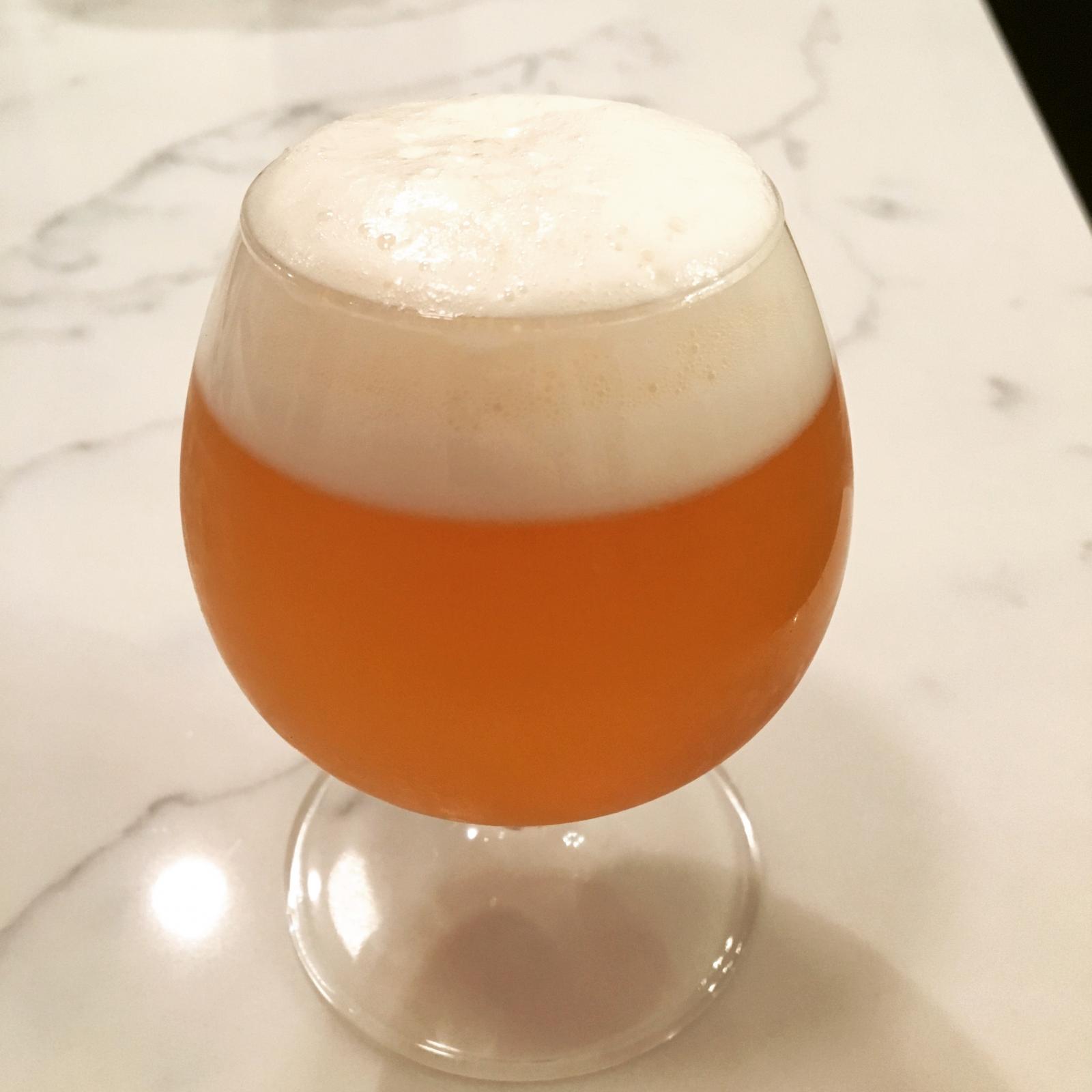So here it is. It actually looks a lot lighter in my living room than this, but I felt obligated to do a TH style pic haha.
Overall it certainly reminds me of a TH beer, and I definitely see how this is the yeast combo they are using.
The aroma and flavor of this batch reminds me of Sap. Definitely more clove than Sap, but much, much less than at kegging time on this beer. It has enough hop character that I am reconsidering re-hopping gyle at kegging time. Huge hop aroma and as TH puts it on their website "saturated hop oil finish." The finish has some bready malt in it, kind of like TH but not as much. The esters compliment the hops a lot, although there is still a little too much clove phenol. It's also too tart compared to a TH beer.
This was a 5 gal batch, 6 gal to primary:
67% pils malt
12% red wheat malt
8% toasted unmalted wheat berries
4% homemade crystal wheat malt
4% toasted Marris Otter (10 min @ 350F)
4% acidulated malt
O.G. 1.062
F.G. 1.018 (at kegging time)
85.5% S-04, 7.5% WB-06, 7% T-58
11.5 g S-04, math for the percentages
Pitched at 77F, no temp control at 68-72 F ambient.
2 g CBC-1 for conditioning.
Intensified double decoction mash (pull two thirds, then one third).
Sacch. rest pH 5.2.
I think for next time I will make the following changes:
1) No wheat, 100% barley, probably do a golden promise base with some carafoam and some Munich.
2) No acidification of the mash. I have heard S-04 is a big acid producer, I can definitely believe that.
3) Go to like 2.5% WB-06 and 5% T-58.
4) Drop my pitch rate by a third or so.
5) Still on the fence about re-hopping my gyle/speise.
6) Cut my gyle quantity by a third or so.
View attachment 1508619559814.jpg


